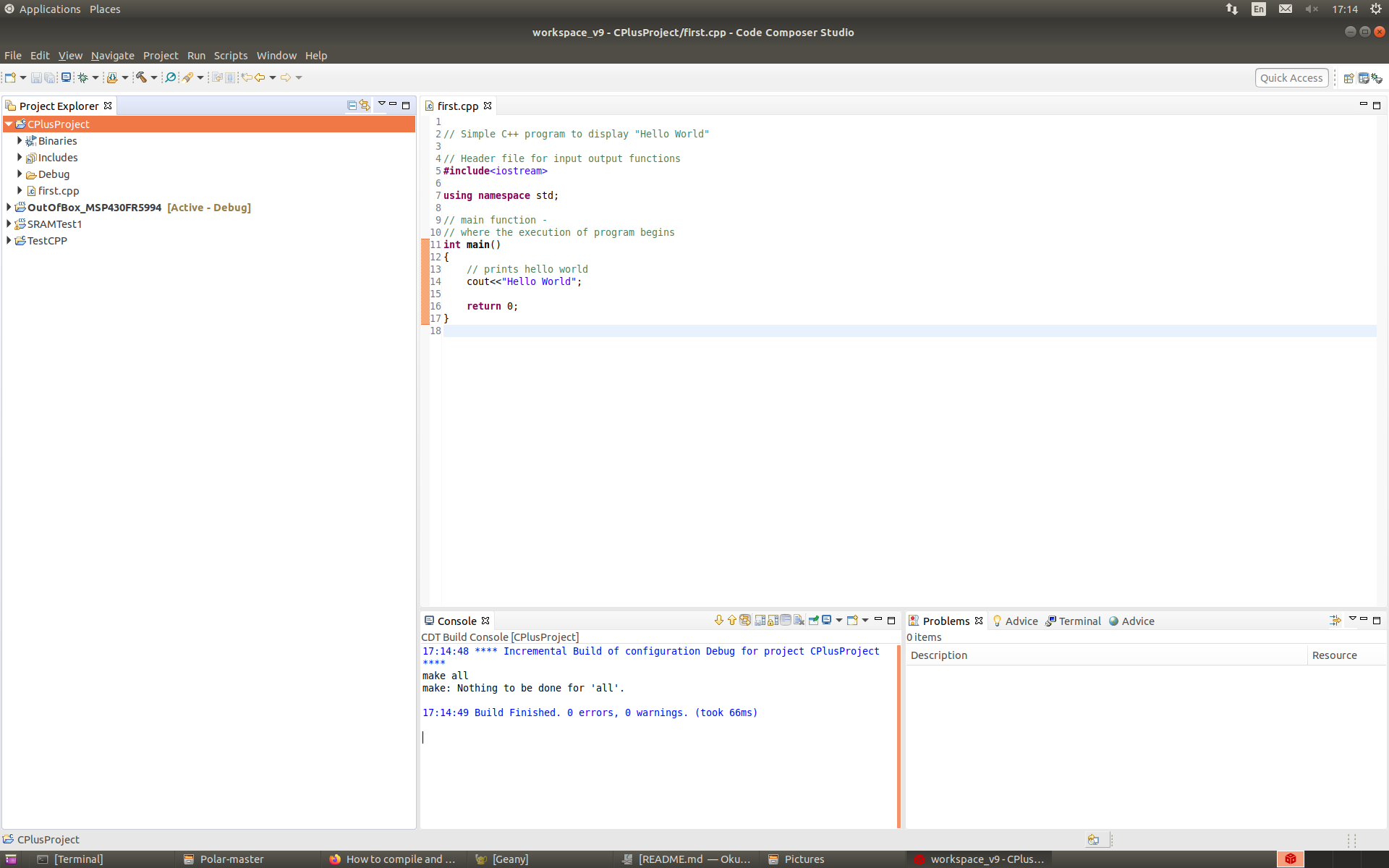
Specifically, the MSP430G2553 comes in its larger, dual in-line package (DIP) version, rather than the smaller surface-mounted versions. The centerpiece is a removable integrated circuit: the MSP430G2553 that you can program to run your application. The launchpad ships as a roughly credit card-sized circuit board. Energia (recommended: version 1.8.7E21 or later) The Unboxing.Texas Instruments Code Composer Studio (recommended: version 9.1.0 or later).Windows Device Manager (included with Windows 10).Any reliable anti-malware application (I always recommend this).In this article, I will be using the 64-bit version of Windows 10. The software tools for working with this development board are available across Windows, Mac, and Linux operating systems.

The only hardware you will need is a personal computer and the MSP-EXP430G2ET development kit itself. Then we will upload one or two example applications that will blink the light-emitting diodes (LEDs) located on the kit. This unboxing will show you how to get the software toolchain for one of these devices set up. I purchased one of these devices for about $10 (USD).

Luckily, Texas Instruments has provided a brand-new development experience in its stead: the MSP-EXP430G2ET. Earlier this year, I wrote about the discontinued board and how you can continue to use it as a programming board if you already have one in your possession. Recently, I was surprised to see the original MSP430 development board had been discontinued in 2019 by its manufacturer, Texas Instruments (TI). The MSP430 Launchpad is a development tool I think you’ll find useful on your embedded workbench, even if it’s your very first.


 0 kommentar(er)
0 kommentar(er)
